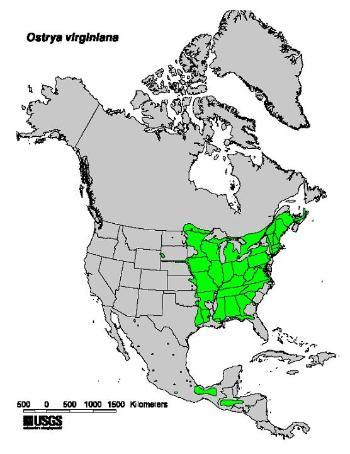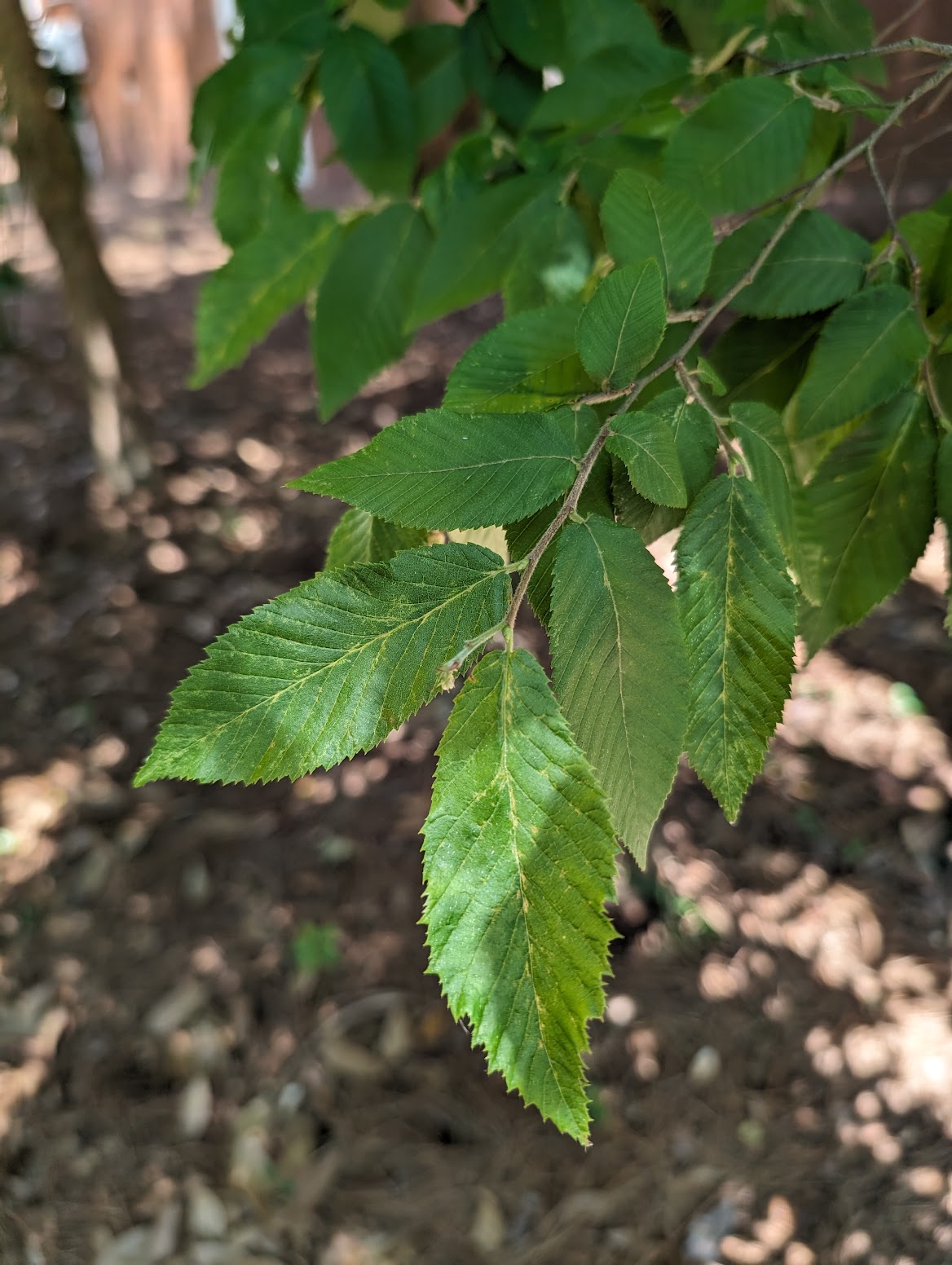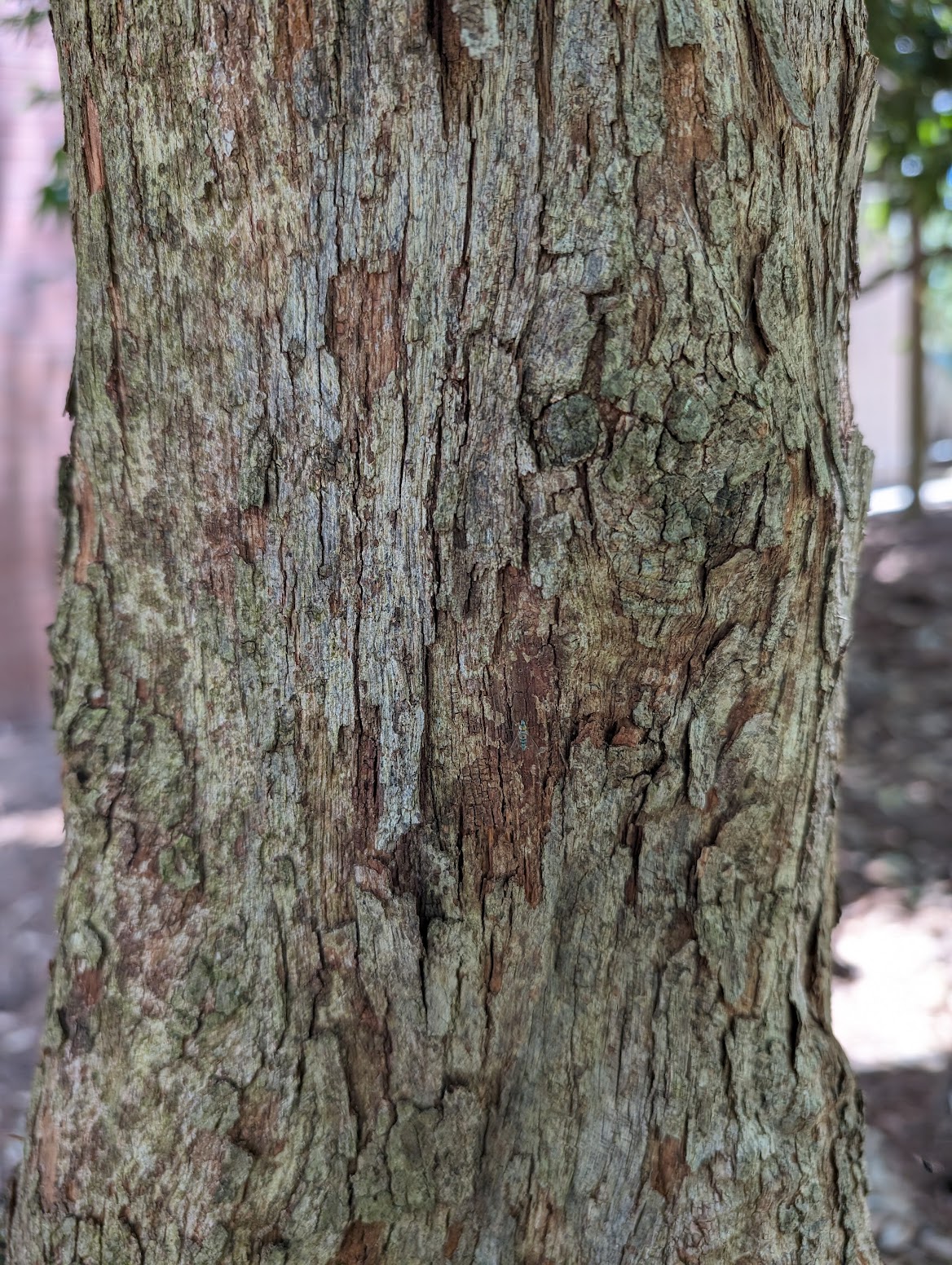Betulaceae – Birch Family
In 2024, this eastern hophornbeam was 36 feet tall and had a diameter of 7 inches. Based on USDA Forest Service models, it will absorb approximately 472.35 lbs. of carbon over the next 20 years. Put simply, this tree will offset up to 1,911 car miles worth of carbon dioxide.
See all species on our Campus Tree Tour.
Introduction
Eastern hophornbeam, also known as the American hophornbeam, is a small tree found throughout the Eastern United States. The bark is brown and flaky. The leaves turn golden-yellow, rusty orange, and deep crimson in the fall even in Florida, and the tree’s fruit closely resembles hops used to brew beer.
Physical Description
Life expectancy: 60-100 years
Height: 30 – 40 feet
Crown: 25 – 30 feet
Diameter: Up to 12 inches
Bark: Brown and distinctively shreddy. Strips of bark are easily peeled off.
Leaves: Deciduous, simple, and alternately arranged upon the twig. Ovate (oval) shaped with tapering, acute, and pointed apices (tips). Margins are doubly serrate, meaning that its teethy edges have smaller serrations. The leaves are dark green on top, lighter green on the bottom, and pubescent (hairy) on both sides.
Veins are prominent and the leaf base is equilateral, or symmetrical, distinguishing itself from an elm leaf.
Twigs: Thin and brown.
Flowers: Green and brown tubular catkins (male and female) that bloom during the spring.
Fruits: Clusters of seed-bearing pods that encase a nutlet. They resemble small (1 to 3 inches) hop fruit used in beer production, and they develop during the summer and are ripe by fall.
Key Identification Characteristics: bark, leaves, small size
Past and Present Uses
The eastern hophornbeam has limited timber value due to its slow growth rate and small size. However, the hardness and durability of the wood makes it useful as fence posts, fuel, and tool handles. This tree is occasionally used for landscaping since its shallow root system allows it to grow well in many soil conditions, though, the tree’s slow growth and sensitivity to pollutants has limited its use in urban settings. In addition to its commercial value, the tree has medicinal uses where indigenous people have used its bark to treat toothaches, soreness, coughs, and other ailments.
Ecological Importance
Origin: Native to North and Central America
Native Range: Found throughout the Eastern United States. Extends north from Ontario, south to Florida. Also found in the mountains of Mexico, south to El Salvador and Honduras (Figure 1).

Figure 1. Native range of Eastern Hophornbeam. Photo credit: U.S. Geological Survey
The eastern hophornbeam exists in various climatic, soil, and physiologic conditions. It is commonly found on mesic sites on forest slopes with nutrient rich soil. It is an understory species and is moderately shade tolerant. In Florida, this tree species is associated with American hornbeam, pignut hickory, winged elm, sweetgum, black cherry, and basswood.
The fruit is an important winter food for various birds like ringed-necked pheasants and downy woodpeckers, as well as mammals like squirrels, cottontail rabbits, and white-tailed deer. The tree is also a potential host for several butterflies like the Eastern Tiger Swallowtail.
More Information
https://edis.ifas.ufl.edu/publication/ST428
References
Gilman, E. F., & Watson, D. G. (2015). Ostrya Virginiana: American hophornbeam. Ask IFAS - Powered by EDIS. https://edis.ifas.ufl.edu/publication/ST428
i-Tree. (2006). Tree tools - calculate the benefits of trees!. i-Tree. https://www.itreetools.org/
McIntire, C. (n.d.). Eastern hophornbeam. Landmark College. https://www.landmark.edu/academics/tree-campus/species/eastern-hophornbeam
Metzger, F. T. (n.d.). Eastern Hophornbeam. Ostrya virginiana (Mill.) K. Koch. https://www.srs.fs.usda.gov/pubs/misc/ag_654/volume_2/ostrya/virginiana.htm
North Carolina Plant Toolbox. (n.d.). Ostrya virginiana. Extension Gardener. https://plants.ces.ncsu.edu/plants/ostrya-virginiana/
Ritz, S. E. (2012). Plant guide for hop hornbeam (Ostrya virginiana). USDA Natural Resources Conservation Serivce, Appalachian Plant Materials Center. https://plants.usda.gov/DocumentLibrary/plantguide/pdf/pg_osvi.pdf



